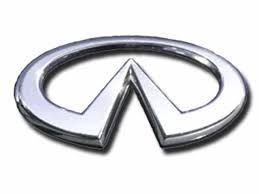M35x AWD V6-3.5L (VQ35DE) (2007)
/Page-568010.png)
CAUTION:
^
Perform this inspection only when DTC P0011 or P0021 are detected in self-diagnostic results of CONSULT-II and it is directed
according to inspection procedure. Refer to EC-126, "SELF-DIAG RESULTS MODE". See: Powertrain Management/Computers and
Control Systems/Testing and Inspection
^
Check when engine ins cold so as to prevent burns from any splashing engine oil.
1. Check the engine oil level.
2. Perform the following procedure so as to prevent the engine from being unintentionally started while checking.
a. Release fuel pressure.
b. Disconnect ignition coil and injector harness connectors.
3. Remove intake valve timing control solenoid valve.
4. Crank the engine, and then make sure that engine oil comes out from camshaft bracket (No. 1) oil hole. End crank after checking.
WARNING: Be careful not to touch rotating parts (drive belts, idler pulley, and crankshaft pulley, etc.).
CAUTION: Engine oil may squirt from intake valve timing control solenoid valve installation hole during cranking. Use a shop cloth to
prevent the engine components and the vehicle. Do not allow engine oil to get on rubber components such as drive belt or engine mount
insulators. Immediately wipe off any splashed engine oil.
^
Clean oil groove between oil strainer and intake valve timing control solenoid valve if engine oil does not come out from camshaft bracket
(No. 1) oil hole.
5. Remove components between intake valve timing control solenoid valve and camshaft sprocket (INT), and then check each oil groove for
clogging.
^
Clean oil groove if necessary.
6. After inspection, install removed parts.
Inspection for Leaks
The following are procedures for checking fluids leak, lubricates leak.
^
Before starting engine, check oil/fluid levels including engine coolant and engine oil. If less than required quantity, fill to the specified level.
^
Use procedure below to check for fuel leakage.
-
Turn ignition switch "ON" (with engine stopped). With fuel pressure applied to fuel piping, check for fuel leakage at connection points.
-
Start engine. With engine speed increased, check again for fuel leakage at connection points.
^
Run engine to check for unusual noise and vibration.
NOTE: If hydraulic pressure inside timing chain tensioner drops after removal/installation, slack in the guide may generate a pounding noise
during and just after engine start. However, this is normal. Noise will stop after hydraulic pressure rises.
^
Warm up engine thoroughly to make sure there is no leakage of fuel, or any oil/fluids including engine oil and engine coolant.
^
Bleed air from lines and hoses of applicable lines, such as in cooling system.
^
After cooling down engine, again check oil/fluid levels including engine oil and engine coolant. Refill to the specified level, if necessary.
Summary of the inspection items
